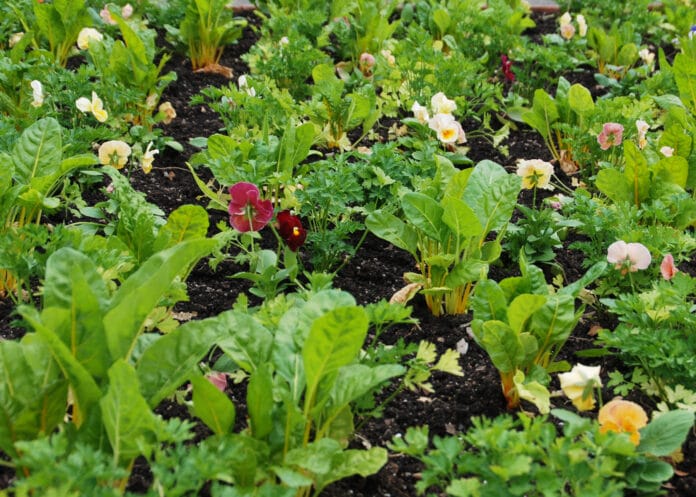
The cool wet spring delayed planting, deck and patio installations and other outdoor projects. Fortunately, there is still time to complete much of your outdoor work.
Many gardeners missed or limited spring planting due to the weather. You can still add vegetables to your garden, mixed borders and containers. Just check the seed packets for the number of days from planting to harvest. Then calculate the number of days left in the growing season and plant those veggies that have enough time to reach maturity before the first fall frost. Leaf lettuce, radishes, spinach and peas are just a few to consider.
Late August is a good time to patch bare spots, overseed, or start a new lawn. The soil is warm, air temperatures are starting to cool and rain showers are often less intense. This means the grass seed will germinate more rapidly and the young seedlings will thrive in the cooler temperatures.
Fill voids in the garden with fall blooming annuals. These add color to the late summer and fall landscape. Many provide needed nectar for the pollinators, helping them prepare for winter hibernation or their long migration home. Look for nemesias, pansies, stocks, dianthus and other plants that thrive in cooler weather.
Plant perennials to add color and texture to your landscape throughout the year. Get the most out of every inch of your landscape by selecting plants with multiple seasons of interest. Select perennials with colorful flowers, attractive foliage and seed heads that provide winter interest and food for the birds. Make sure you include a variety of plants to provide spring, summer and fall blossoms for you, the bees, butterflies and hummingbirds to enjoy.
Survey your landscape and look for opportunities to use plants to screen unwanted views, maintain desirable lines of sight or create the perfect space for relaxing and entertaining. Remember to look up as you begin this process. Avoid planting trees and large shrubs under overhead utilities. When these small transplants reach their mature size they can create a hazardous situation and require removal or severe pruning that leaves you with an unattractive plant.
As you begin planning and at least three business days before you put the first shovel in the ground always call 811. They’ll contact all the appropriate companies who will mark the location of their underground utilities in your work area. This helps eliminate the danger and inconvenience of accidentally knocking out power, cable or other utilities while you create a beautiful landscape.
Help new plantings get off to a healthy start with proper care. Check new plantings often and water thoroughly whenever the top few inches of soil are crumbly and moist. This encourages deep roots that are more drought tolerant and better able to compete with weeds and tolerate pests.
Spread a layer of shredded leaves, evergreen needles or wood chips over the soil surface to conserve moisture, suppress weeds and keep the roots cool and moist. Keep mulch off the crowns of plants and trunks of trees. Mulching now reduces time spent watering and weeding.
Take advantage of the remaining season to make the changes you’d like to see in your landscape. You’ll enjoy the adding beauty and improvements this fall and for years to come.














